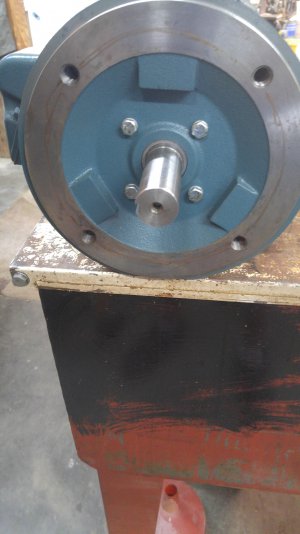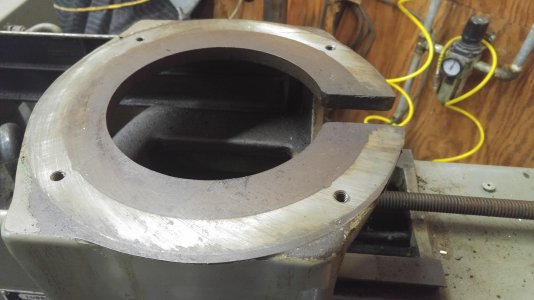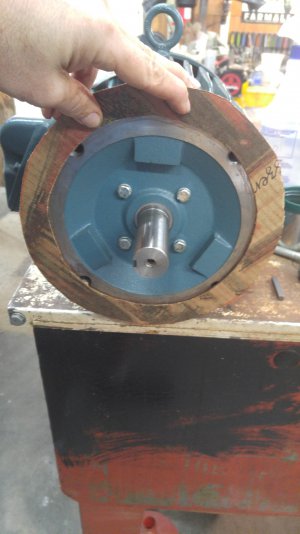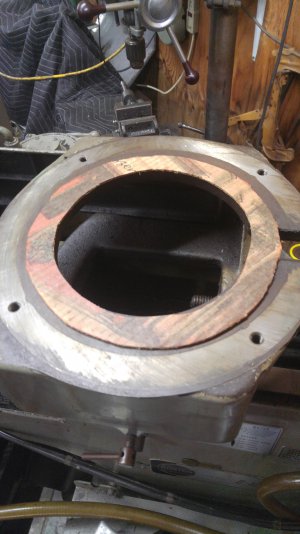- Joined
- Feb 27, 2015
- Messages
- 105
Yes, I DO know that this probably isn't recommended! Please don't just say just that! I am looking for a REASON not to do it.
My Gorton 0-16A had a 2 speed (low - 1hp, high - 2hp), Waferthin motor but it was permanently wired for 440v 3 phase. I decided to go with a new motor and VFD since it cost less than the converter/transformer route.
So... the new motor fits about half its mounting surface on the mill's motor mount. A side issue is that the shaft length is a little short. My thought is to take off the 1/4" flange by cutting or grinding it to a flat surface. That makes the motor's mounting surface effectively about 1/2 again bigger. If I do this, I am going to fashion clamps to secure the motor to the mill, using the original motors threaded holes.
The other option is to cut a piece of steel to the size of the outer edge of the mill's motor mount with an inner hole for the shaft to go through. Then bolt that plate to the motor and to the motor. That will force me to extend the shaft.
That old motor is for sale, by the way.
My Gorton 0-16A had a 2 speed (low - 1hp, high - 2hp), Waferthin motor but it was permanently wired for 440v 3 phase. I decided to go with a new motor and VFD since it cost less than the converter/transformer route.
So... the new motor fits about half its mounting surface on the mill's motor mount. A side issue is that the shaft length is a little short. My thought is to take off the 1/4" flange by cutting or grinding it to a flat surface. That makes the motor's mounting surface effectively about 1/2 again bigger. If I do this, I am going to fashion clamps to secure the motor to the mill, using the original motors threaded holes.
The other option is to cut a piece of steel to the size of the outer edge of the mill's motor mount with an inner hole for the shaft to go through. Then bolt that plate to the motor and to the motor. That will force me to extend the shaft.
That old motor is for sale, by the way.





